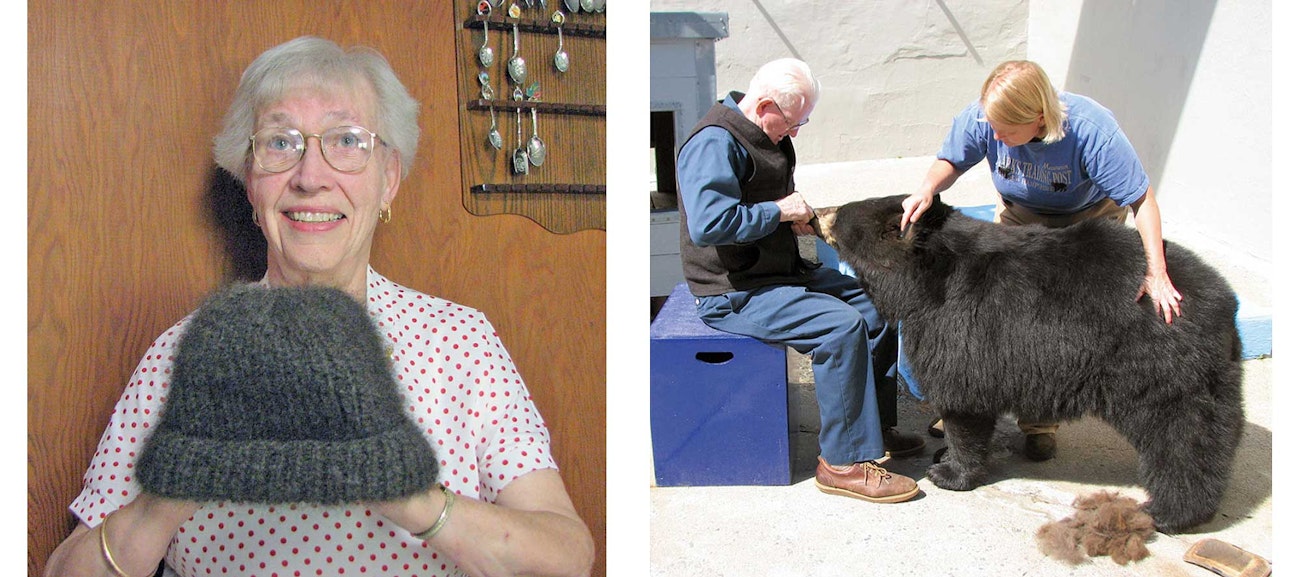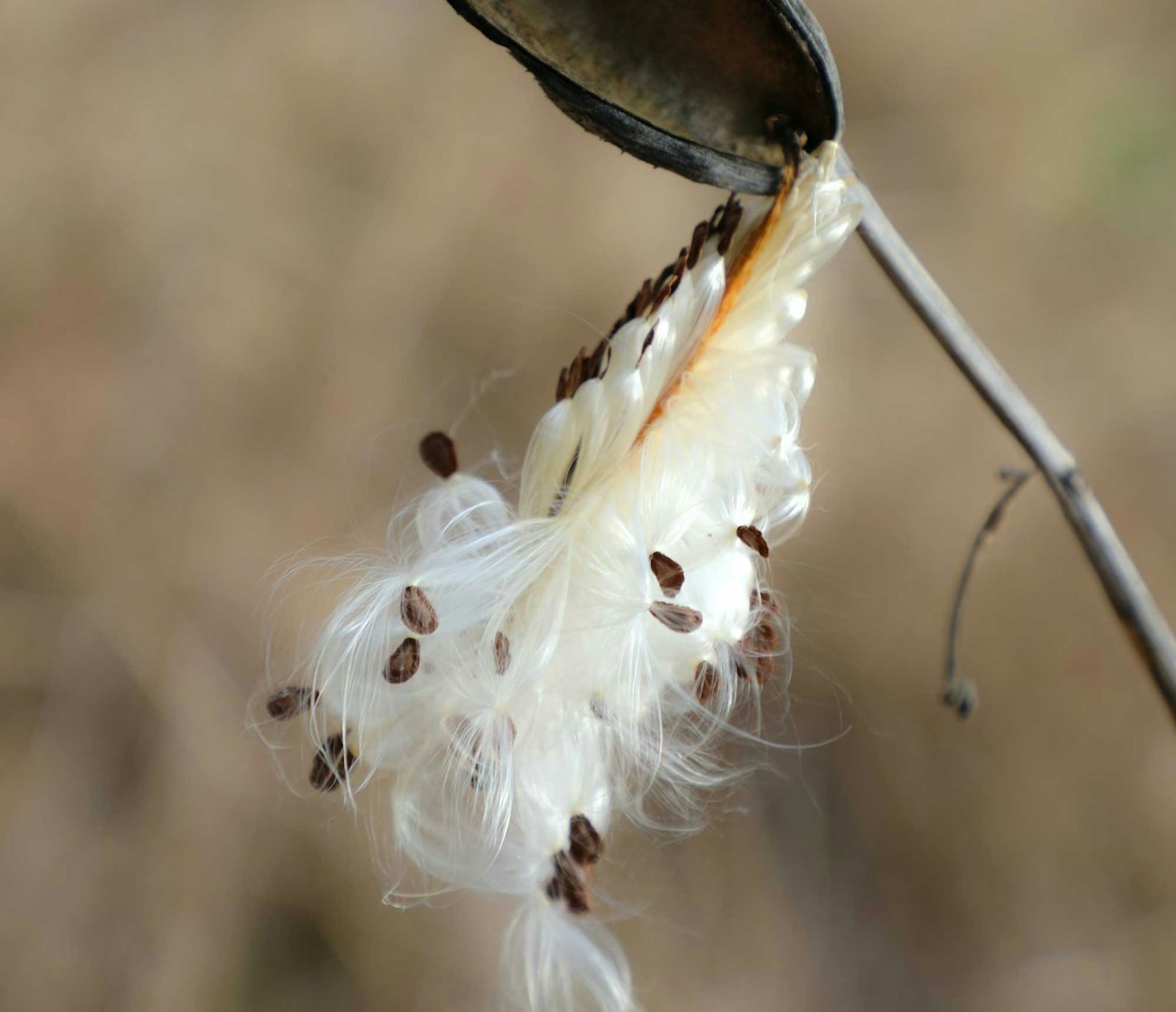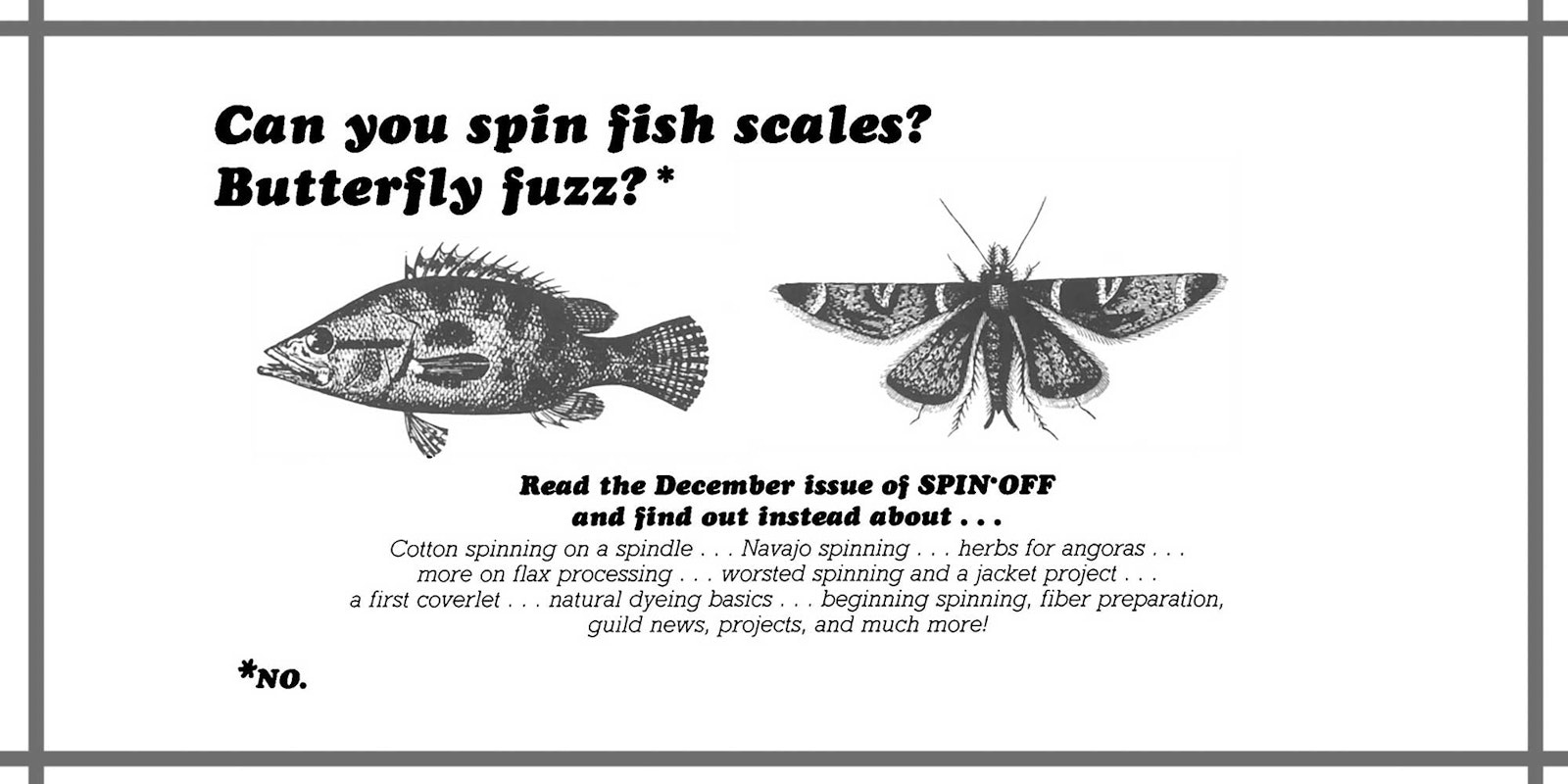After you learn to spin yarn, you may start looking at the world with new eyes. Humans have been spinning yarn for thousands of years, and over time countless spinners have asked the question, “Can you spin yarn with that?” Here are some answers.
Keep in mind, many of these fibers fall under the heading of “just because you can doesn’t mean you should.” Spin Off makes no recommendations whatsoever that spinners try this for themselves.
In 2008, our sister publication PieceWork published “Maxine Tyler: Official Bear Knitter.” Maxine and the bear’s owner, Clark’s Trading Post, sent the raw fiber to be washed and processed into yarn. So though she did not handspin the bear yarn, her knitted projects serve as proof of concept. Like the fiber of other large mammals including bison and musk ox, bear fiber comprises a downy undercoat and a wiry hair coat.
 Left: Maxine Tyler holding a man’s hat that she knitted from bear-hair yarn. Right: Victoria Rix being fed by W. Murray Clark, head bear trainer and son of the founders of Clark’s Trading Post, while his daughter, Maureen Clark, combs her. Photos by Elena Chevalier
Left: Maxine Tyler holding a man’s hat that she knitted from bear-hair yarn. Right: Victoria Rix being fed by W. Murray Clark, head bear trainer and son of the founders of Clark’s Trading Post, while his daughter, Maureen Clark, combs her. Photos by Elena Chevalier
Known as a host plant for monarch butterflies, milkweed is growing in popularity as people spread the seeds in ditches and fallow areas. The silky floss might catch your eye first, but the plant’s tall stalks are the traditional source of fiber. Milkweed stalks can be retted, then processed like flax and nettle.
Spinners have been known to gather the floss, separate out the seeds, and spin it as a blend; it is not suitable to be spun on its own. (Some people have an allergic reaction to the plant.)
 Milkweed pod and floss. Photo by Michael and Diane Weidner on Unsplash
Milkweed pod and floss. Photo by Michael and Diane Weidner on Unsplash
In the Winter 2016 issue of Spin Off, Leslie Ordal explored spinning the fiber of Curly horses. She reports, “Curly fiber is fairly short, from about 1⁄2 inch up to 3 inches, but usually falling in the 1-inch range. Generally too short for combs, Curly fiber can be prepared well using cotton cards or a drumcarder with a fine cloth.”
 Left: North American Curly horse; photo by Terry Schmidt. Right: Closer inspection reveals the curly coat; photo by Ella Pichon
Left: North American Curly horse; photo by Terry Schmidt. Right: Closer inspection reveals the curly coat; photo by Ella Pichon
What other strange and wonderful things have you used to spin yarn? Share your stories via our email address.
Anne Merrow is Editorial Director and a cofounder of Long Thread Media.
Originally published December 13, 2018; updated August 14, 2023.

